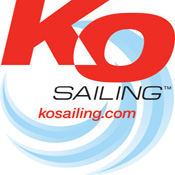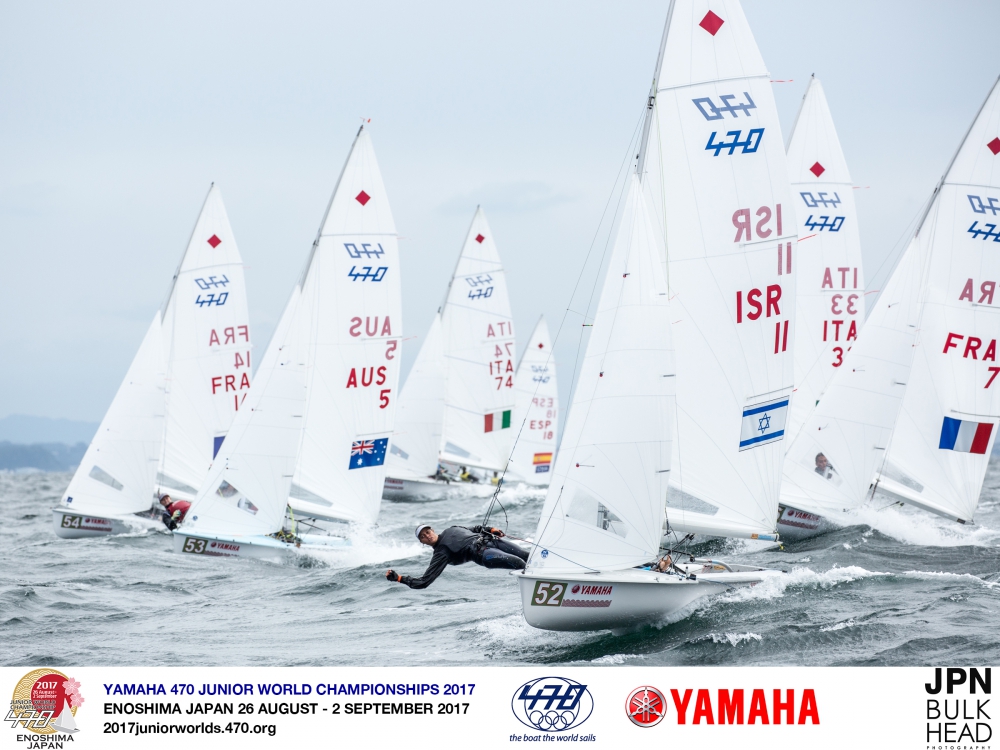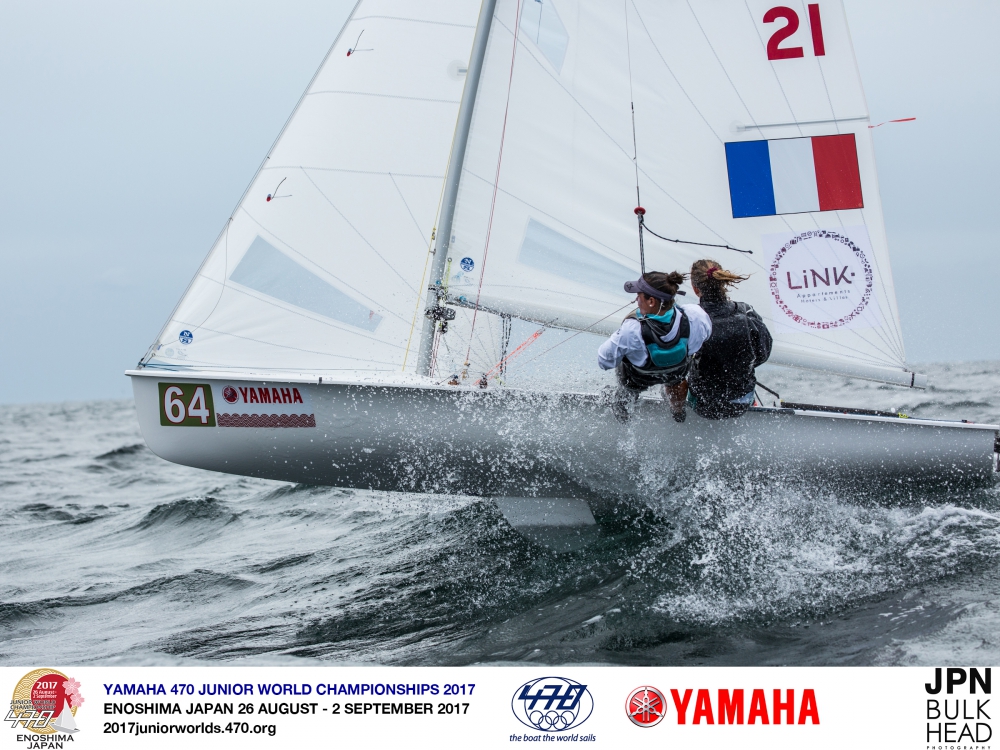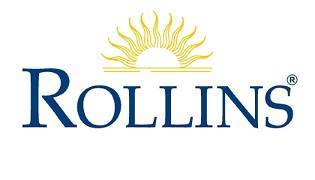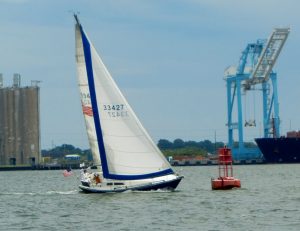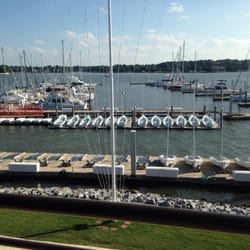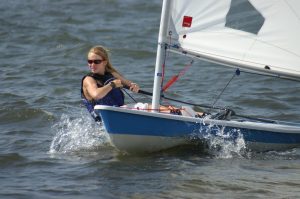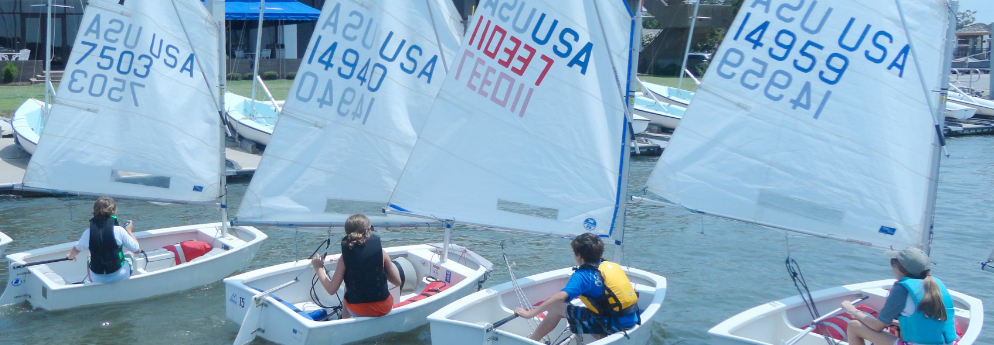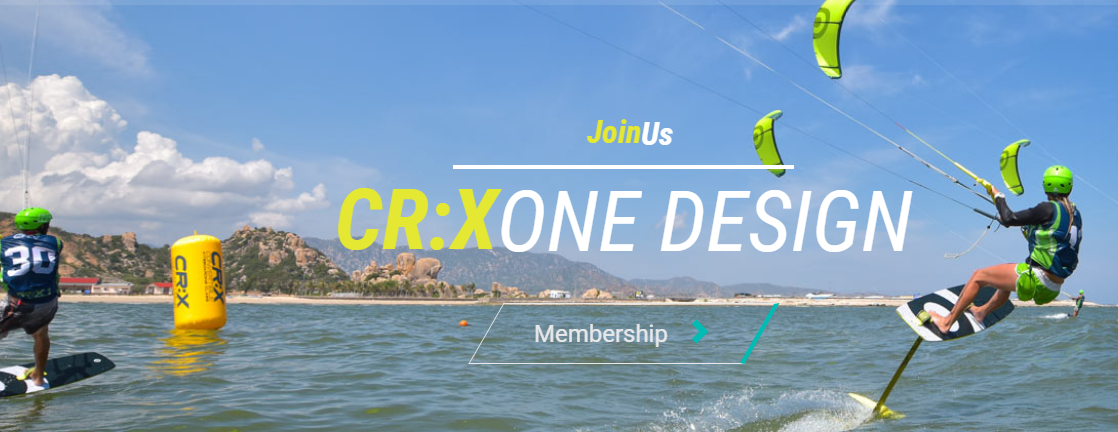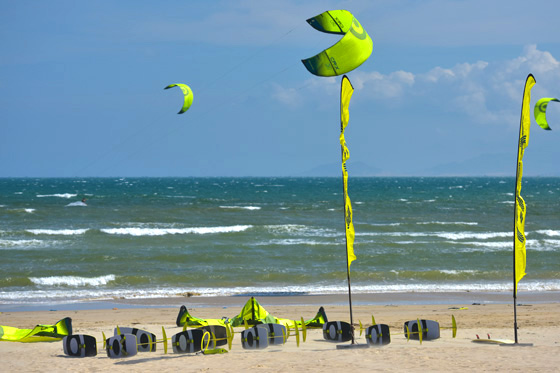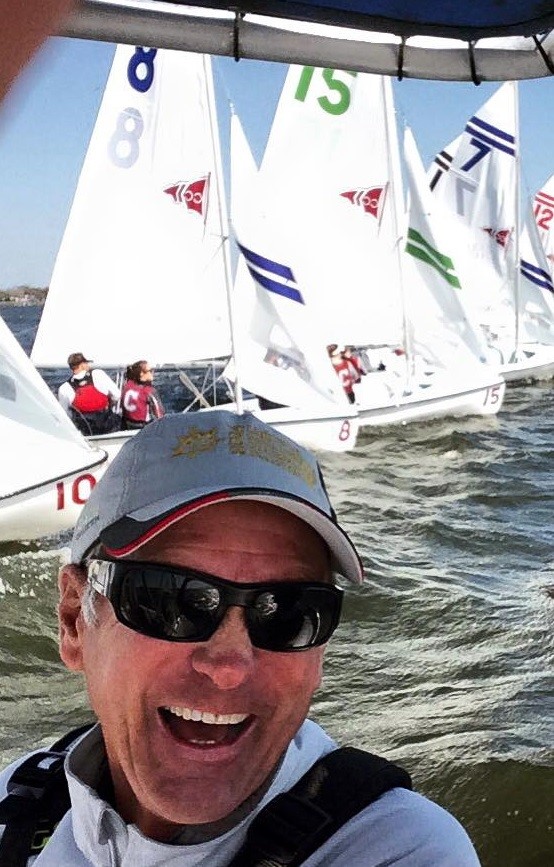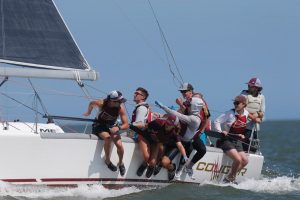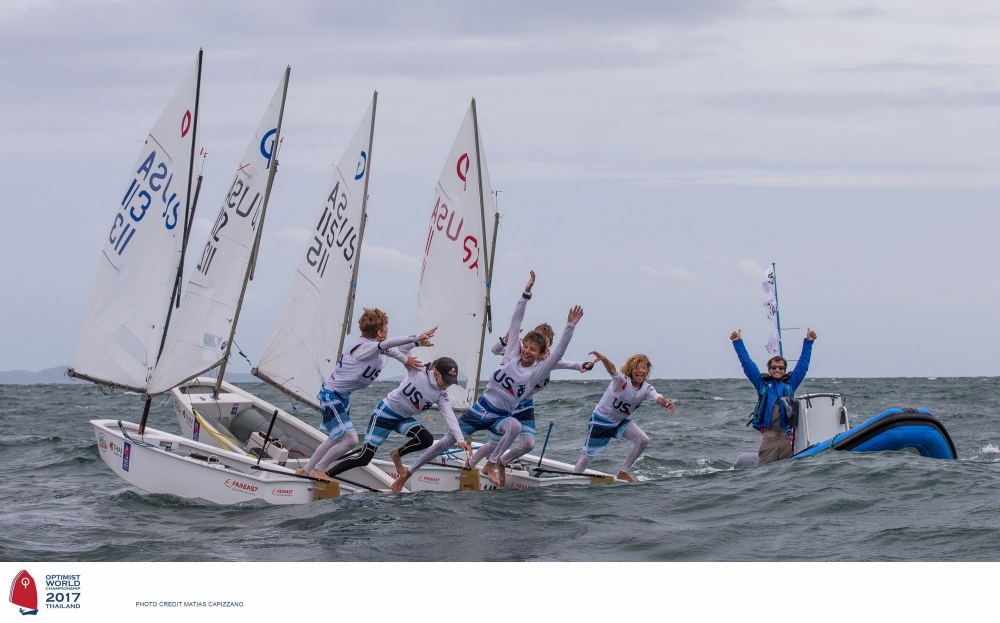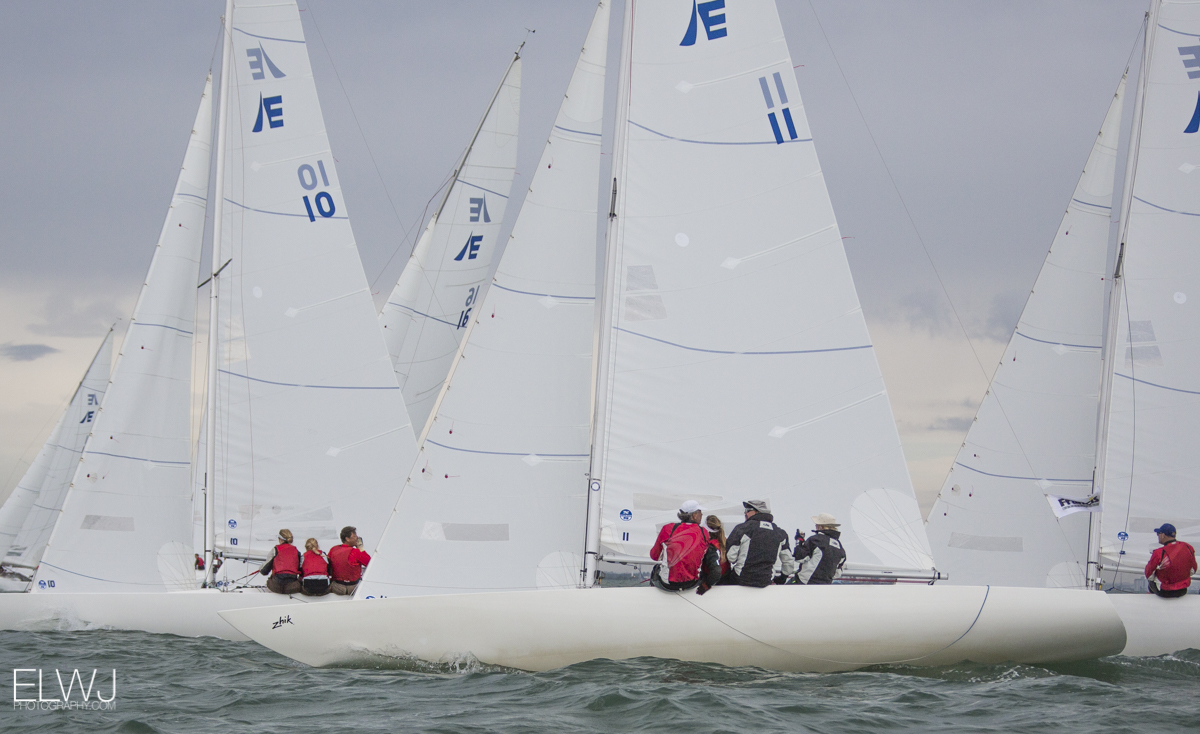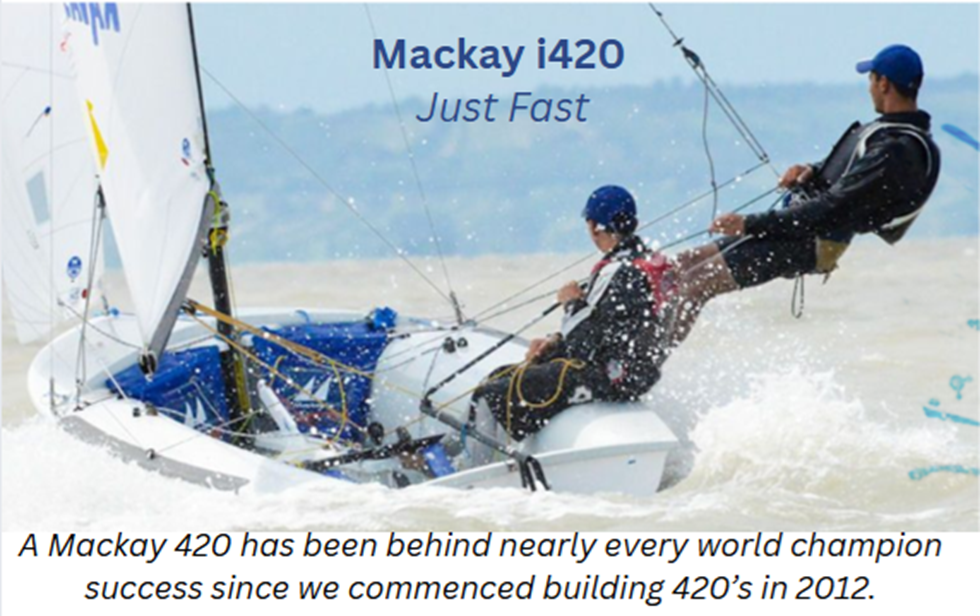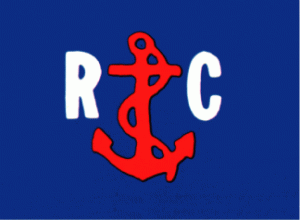
Sailboat racing involves many different roles in order to be successful. We have the skippers, crew members, shore crew, and of course, the race committee. Finding qualified people to be apart of the race committee can be difficult task. Often the most experienced candidates for the race committee are those who’d rather compete in a sailboat rather than be on the committee.
All of us sailors have attended the race where the race committee just didn’t “have it together.”
Here are some key points when it comes to being part of the race committee.
What is the Race Committee?
The term “race committee” includes any person or group in charge of “managing” a sailboat race. This includes everything from writing the sailing instructions to actually conducting the race.
What skills are required?
-Teamwork
-Ability to focus on a specific task
-Ability to follow instructions
-Ability to adjust quickly to changes
Do I need to know anything about sailboat racing?
No! Just be willing to learn and take directions.
How important is race management in sailboat racing?
No race is possible without the effort of the race committee. A race committee must be able to properly run and operate an orderly event for the satisfaction of the competitors. Without this, sailors might decide to not attend that regatta or race with the poor race committee.
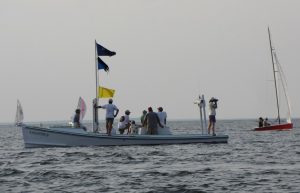
The prime goal is to offer fair competition for all. A good race committee starts on time, delivers clear racing instructions and signals, sets a precise course and adjusts promptly to changing wind and weather. A well-organized race committee does a lot to set the tone for fair competition.
Another important goal is to give satisfaction to competitors. This is done by setting a good start line, setting a good course and finish line, and providing a racing event that is safe and fun, ashore and afloat. It requires foresight, detailed planning and above all, teamwork.
What are the rewards?
-Satisfaction of a job well done
-Working as part of a team
-An important role in an exciting event
-Being out on the water
-Action, fun, new friends
The Race Management Team
Mark Setter- Positions, sets, and relocates marks of the course. Relays changes in wind to the race committee.
Wind Reader- Observes and records wind direction at regular intervals
Principal Race Officer (PRO)- Chief executive of the race committee team. Makes the major race management decisions.
Line Sighter- Sights starting line to identify boats “on the course side” and tracks boats returning to the start. Sights finish line to determine order and moment of finish.
Sounder- In charge of sound signals (gun, horn, or whistle) that draw competitors’ attention to visual signals.
Scorer- Tabulates points and finishing times for finishers and calculates handicaps if required.
US Sailing is committed to ensuring successful race committees. They administer a national program of race management training and certification. The certifications make sure that race committees meet a standard. Having these US Sailing Race Management Certifications can build your skills, be invited to run all types of racing, and make friends.
For more information on US Sailings Race Management Training check out their website.
http://www.ussailing.org/race-officials/race-officers/race-officer-program/
Sail1Design Career Consulting 101
Sailing Coach Job Hunt 101
For over a decade now, Sail1Design has helped sailing programs and professional marine-industry institutions find great candidates to fill open positions. Through the Great Recession, and now what we hope will be continued recovery, our Job Bank/Career Center has helped place thousands of candidates with coaching, sailing, and marine-related job openings throughout the US, and beyond.
In that time we’ve learned a little bit, and as always, continue to be impressed both with the incredible job opportunities available, along with the quality of candidates that use our site as a resource.
We know it can be difficult and sometimes stressful; here are a few tips, both for employers and candidates alike, that we’ve found help expedite the search-to-hire process.
EMPLOYERS
- Take Your Time. The best ads for candidates are not hastily drawn up, but thoughtful, concise, and organized. In many cases this is the first experience candidates have with your institution, and will make an impression based on what you say, and how you say it. Our system offers job ads for all levels, and each is effective. Generally, the more exposure you invest in, the better off your application pool will be.
- Don’t Say Too Much. Sounds crazy, but while every word counts in your description, more words, additional duties, and too much at first bite may leave too little negotiating room later. You want to have candidates call on you…. And their having questions about the job is a good thing. Don’t let your ad cause them not to call unnecessarily!
Be Positive & Creative. Add testimonials, photos, videos, that show off your institutions unique strengths. Visuals and positive testaments about your organization speak volumes to candidates! Even for candidates you may not hire, it’s amazing how things can change, and how our small community communicates. Candidates have taken the time to apply; your institutions reputation with all candidates will grow if you are proactive, and respond to applications professionally, and quickly. The candidate you say “no” to may be a good friend of the person you want to hire!
- Do Your Homework. Search our Database. Sail1Design has a very healthy database of premium active resumes. Often employers search this before creating their job ad. Active candidates may already be waiting for your call!
- Need More Help? Hire S1D. Sail1Design offers hiring services and job recruitment consulting. We have a combined 100+ years in
the sailing industry and hiring process, so we can help! [email protected]
JOB SEEKERS
- Build a Resume. Sail1Design offers a resume service, where you can create your own resume for employers easily to access. Log into our site and hit the “Post a Resume” button. Taking the time to create a job-specific resume speaks volumes to the hiring crew; it tells them that their institution is really on your mind! Sail1Design also offers a premium resume bank that employers can search through, often before they post a job. Make sure your resume is in there; you may get a call before the job is even posted!
- Ask! Be ready with targeted, focused questions about each opportunity. Housing, time off, growth opportunities, etc. can expedite your search and also show employers that you are serious.
- Communicate Often and Quickly. Job opportunities often come and go quickly. If you are keen on a job, make 100% sure the institution knows about you, your genuine interest, and your contact information. If you ever feel like the lines have gone down, it’s almost never a bad idea to follow up again. And, for jobs you applied for that may not be tops on your list, make sure still to follow up positively and professionally. You never know, you may end up wanting to be there.
- Line Up References. Make sure you research opportunities, and line up personal references beforehand so hiring companies will be able to fast-track your application to the final group. References are enormously important in the tight-knit sailing world.
2017 470 Junior World Championship Results & Report
From 470.org
Spain’s Silvia Mas Depares/Paula Barcelo Martin today successfully defended their Junior World title and France’s Hippolyte Machetti/Sidoine Dantès claimed their first 470 Junior World Championship victory.
For Full Results, go HERE
The final day of racing at the 2017 470 Junior World Championships enjoyed a superb 15-20 knot northerly breeze, as Typhoon #15 remained to the east of Japan. A last race at 1100 hours for teams not in the medal race was followed by the podium decider for the top ten men’s and women’s teams, all raced on course area B, much closer to shore.
The breeze from the shore was shifty and gusty, jumping up to 28 knots, but building on the experience of the past two days of strong winds, teams looked much more confident and fully prepared for whatever the weather threw at that them as they headed out to the race track.
The Medal and Prize giving ceremony took place at Enoshima Yacht Harbour with traditional Japanese celebrations.
The next international event taking place in Enoshima is Olympic Week, 26-29 October, which will see the return of many of the 470 fleet.
470 MEN
The Men’s Medal Race was a showdown between the top four boats, and as the race unfolded decision making was critical in the close tactical situations. Series leaders Hippolyte Machetti/Sidoine Dantès were on target to win their first 470 Junior title, but had the significant matter of Japan’s Daichi Takayama/Naoya Kimura and team mates Guillaume Pirouelle/Valentin Sipan (FRA) to eliminate from gold medal contention.
During the 2nd upwind leg of the windward/leeward course, Machetti/Dantes were covering Takayama/Kimura, and the Japanese were also keeping their eyes close on Piroquelle/Sipan.
“Probably, one time, we had an opportunity to stay with Piroquelle/Sipan, but we wanted to break through the situation with Machetti/Dantes and beat them. We then saw Piroquelle catching a better gust,’ said Takayama. The Japanese finished the medal race in 5th to claim the bronze medal.
Machetti/Dantes did what they needed in the race, finishing 3rd, and with it claimed the 470 Junior World Championship title, and upgrading from their silver medal at the 2017 470 Junior Europeans last month. Silver to Piroquelle/Sipan, who themselves won the 470 Junior World title in 2015.
“It is totally amazing to win here in Japan the Junior World Championship,” said an elated Machetti. “We really expected to make this result and we did it, so we can’t be more happy today.”
Sidoine added, “It was hard work on the water because we had to control the Japanese to be first. We did it so amazing, we are really happy.”
470 Men – Overall Top Ten
1. Hippolyte MACHETTI/Sidoine DANTÈS (FRA 79) – 20 pts
2. Guillaume PIROUELLE/Valentin SIPAN (FRA 76) – 33 pts
3. Daichi TAKAYAMA/Naoya KIMURA (JPN 4601) – 34 pts
4. Giacomo FERRARI/Giulio CALABRÒ (ITA 757) – 53 pts
5. Wiley ROGERS/Jack PARKIN (USA 7) – 60 pts
6. Keiju OKADA/Kotarou MATUO (JPN 4562) – 70 pts
7. Nitai HASSON/Tal HARARI (ISR 15) – 83 pts
8. Thomas PONTHIEU/Quentin PATURLE (FRA 95) – 86 pts
9. Maor ABU/Yoav ROOZ (ISR 10) – 103 pts
10. Chris CHARLWOOD/Josh DAWSON (AUS 8) – 110 pts
470 WOMEN
The Women’s Medal Race was equally tense between Silvia Mas Depares/Paula Barcelo Martin (ESP)and Australia’s Nia Jerwood/Monique De Vries. At the bottom gate, Jerwood/De Vries had the advantage, whilst Mas/Barcelo almost capsized after gybing, and rounded in the back half of the fleet.
This position change was enough to hand the gold to the Australians, but in the second upwind all change as the Italian teams and France’s Marina Lefort/Lara Granier overhauled the Aussies. The Spanish partnership managed to recover to finish the medal race in 6th place and win the gold medal and their second successive 470 Junior World Championship title.
“It feels amazing to win the Junior Worlds with Paula as crew,” commented Mas. “We are very happy, as it has been a difficult week with all conditions and very windy, and finally everything was very tight and now it is over and we are really happy to win here in Enoshima.”
Silver to Jerwood/De Vries and bronze to Ilaria Paternoster/Bianca Caruso (ITA).
“This is a very valulable regatta for us and is the first stepping stone in our campaign towards 2020,” reflected Jerwood, “and we are looking forwards to the next 3 years of working hard and we’ve got a few more regattas ahead of us at the end of the year, and we look forward to coming back here for Enoshima Olympic Week.”
All these teams have evolved their 470 careers alongside each other, and stepped into the 470 from the 420 Class. Their rivalries will continue in the campaign to Tokyo 2020 with the first Olympic qualification event next year at the Sailing Worlds in Aarhus, Denmark. Teams will return to Enoshima for the 2019 470 World Championships, which will also be an Olympic qualification event.
The experience of racing in Enoshima, on the waters that will host the 2020 Olympic Games has been hugely beneficial, with light and strong winds as well as the Typhoon impact putting teams on notice of what to expect on the Olympic race track.
470 Women – Overall Top Ten
1. Silvia MAS DEPARES/Paula BARCELO MARTIN (ESP 18) – 40 pts
2. Nia JERWOOD/Monique DE VRIES (AUS 5) – 45 pts
3. Ilaria PATERNOSTER/Bianca CARUSO (ITA 33) – 49.7 pts
4. Benedetta DI SALLE/Alessandra DUBBINI (ITA 74) – 57 pts
5. Beste KAYNAKCI/Simay ASLAN (TUR 99) – 72 pts
6. Jennifer PORET/Camille HAUTEFAYE (FRA 14) – 73 pts
7. Marina LEFORT/Lara GRANIER (FRA 7) – 74 pts
8. Courtney REYNOLDS-SMITH/Brianna REYNOLDS-SMITH (NZL 75) – 88 pts
9. Olivia BERGSTRÖM/Lovisa KARLSSON (SWE 34) – 93 pts
10. Noya BAR-AM/Nina AMIR (ISR 11) – 95 pts
Club Profile: Rollins College Sailing
Founded in 1885 by New England Congregationalists who sought to bring their style of liberal arts education to the Florida frontier, Rollins is a four-year, coeducational institution and the first recognized college in Florida. News Flash: Rollins College seeks a new Head Sailing Coach!
The perfect blend
Challenging coursework, engaging service and international opportunities, and nearly 100 student-led organizations and clubs create a rich living and learning environment ripe for you to find your passion and potential.
Engage in a wide range of ideas and perspectives
A Rollins education challenges you to step outside of your intellectual comfort zone—explore new ideas, reconcile seemingly irreconcilable perspectives, read critically, and write reflectively. In the process, you’ll attain a deeper understanding of the world and your place in it.
Make a difference
At Rollins, you won’t serve the community for the mere purpose of adding a line to your resume—you’ll connect your education and your passions to the needs of the world.
Did we mention location?
Located along the banks of Lake Virginia in Central Florida, our beautiful campus encourages you to take advantage of Florida’s natural beauty and Orlando’s vibrant metropolis.
Mission Statement
Rollins College educates students for global citizenship and responsible leadership, empowering graduates to pursue meaningful lives and productive careers. We are committed to the liberal arts ethos and guided by its values and ideals. Our guiding principles are excellence, innovation, and community.

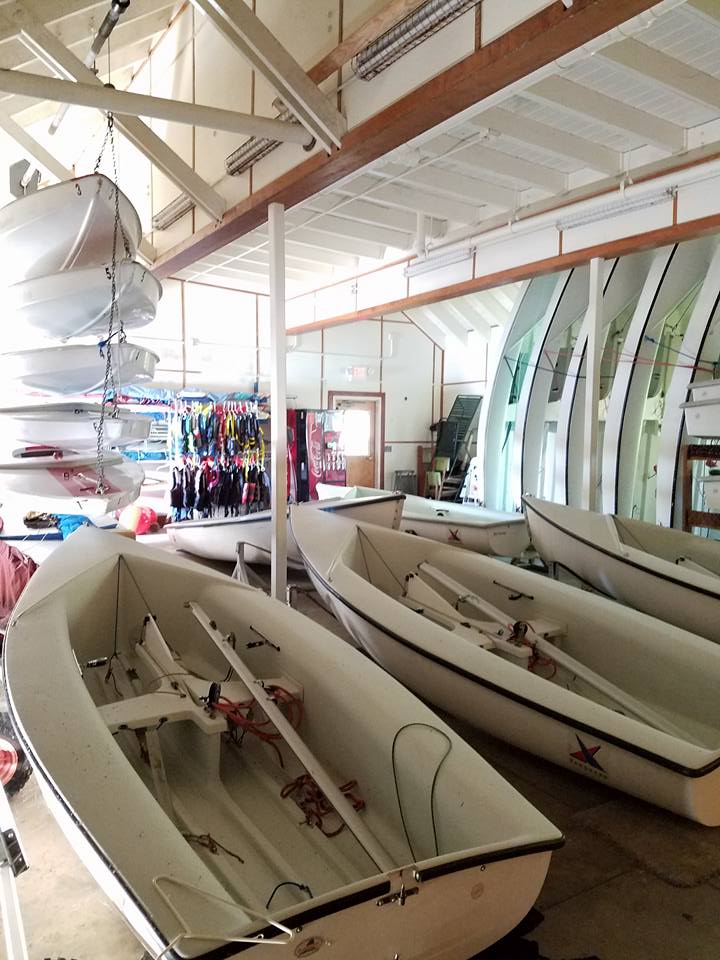
Sailing Team: News Flash: Rollins College seeks a new Head Sailing Coach!
Rollins College is accepting applications for a Head Varsity Sailing Coach. This is a full-time, 12-month position reporting to the Director of Athletics. This role is responsible for all phases of coaching the sailing program, including administrative duties; recruiting; budget management, including purchase, maintenance and inventory of all equipment; hiring and supervising assistant coaches; program management; fundraising and public relations; and planning and scheduling practices, games, transportation and meals. Anticipated start date: January 2018.
Club Profile: Norfolk Yacht & Country Club

From Commodore Rick Sanford, “Norfolk Yacht and Country Club is a warm and welcoming Club where its member families and guests have unique experiences which create lifelong friendships and memories. Our first-class waterfront setting provides a wide-range of social activities and recreational facilities for member enjoyment and perpetuates a culture of camaraderie and fun among our members. NYCC also has a vibrant boating community with recreational and competitive sailing for sailors of all ages.” Our power boaters enjoy cruising our many waterways and the occasional ‘poker run.’”
BRIEF HISTORY
In the late 1890’s, a small group of citizens sought to establish a place where they might enjoy outdoor activities and the camaraderie of likeminded souls. On April 20, 1896, the group received a charter to establish the Country Club. Leaving the city, the founders leased property in the country, along the banks of the Elizabeth River, in what is now called Edgewater.
Although Norfolk’s city limits did not extend past the Hague at the time, the founders were convinced that others would be enticed to this rural setting to escape the congestions in the city and enjoy the amenities of the Club. The Club grew rapidly, and soon it was necessary to lease more land in order to expand the facilities. Six years later, however, it was apparent that the Club had outgrown this location. In 1902, the Club purchased a 35-acre site several miles downstream, near Sewells Point. A new, larger clubhouse was built, as well as four tennis courts and a nine-hole golf course.
During this time, new neighborhoods sprouted up in Riverview, Colonial Place and Larchmont. The primary access to them was by trolley or automobile. Unfortunately, the trolley service was not dependable, and the roads were often barely passable. The leaders of the Club soon realized they had made a mistake: The new site suffered from poor accessibility. Norfolk, on the other hand, had bold plans for a major redevelopment near this very site. Norfolk was set to be the host city for a seven-month celebration to commemorate the 300th anniversary of the Jamestown settlement. The site for the festivities was Sewells Point. The Jamestown Exposition sparked a surge in constructions as Norfolk prepared to welcome the rest of the country. The Club’s leaders, not wanting to miss an opportunity, sold its Sewells Point property in 1906.
A search for another, more accessible site was begun. In 1908, a location was selected along the banks of the Lafayette River. It was convenient to the trolley line and to the bridge across the river. It had ample space for the Club’s sports facilities, along with a magnificent waterfront view. On February 22, 1909, the Country Club opened with a new clubhouse, four tennis courts and a nine-hole golf course. In 1915, additional land was acquired to enlarge the golf course to eighteen holes. The golf course, regrettably, was short-lived.
As the country prepared to enter World War I, Norfolk’s leaders worked to persuade the US government that the former exposition site was an excellent center for military operations. In early 1917, the Navy leased space in a downtown office building as the headquarters of the Fifth Naval District. It wasn’t long before the Navy decided that it had to have the exposition site, and it bought the property for almost $500,000. To support the war effort and Norfolk’s growing importance as a military center, the government needed part of the Club’s new golf course for a cargo terminal. The Country Club had to give up the land that today is known as Norfolk International Terminals. About ten years later, the Club sold the remainder of its golf course; that land became Lochhaven.
In 1923, Norfolk annexed a huge tract of land that included the Country Club, and, for the first time, the Club was within the city limits. In 1927, in deference to this fact, the Club voted to change its name to the Norfolk Country Club. Within a few years, the Club attracted the attention of yachtsmen who believed that the waterfront location was an excellent place for a marina. In recognition of this popular new addition to the Club’s activities, the Club changed its name once more in January, 1936, to the Norfolk Yacht and Country Club.
In just 40 years, the little Club founded on a small, leased site in Edgewater had become a prominent fixture on the banks of the Lafayette River. In these early years, the Club flourished and faltered, reflecting the fortunes of its membership and the city at large. The next sixty years were times of unparalleled growth for both Norfolk and the Club. Surely, there were more bumps along the way, but Norfolk and the Club prospered under the leadership that had the vision to dream of great things and the courage to implement them.
HERE AND NOW
Ever conscious of our impact on the river, we have a large contingent of members who participate in the Clean the Bay Day every year. We clean our waterfront and the western waterfront of the Norfolk International Terminals where we collect hundreds of pounds of junk. The Club is an Elizabeth River Project “River Star Business” for our voluntary pollution prevention and wildlife habitat enhancement (we incubate several baby oyster hatcheries). We are also a “Virginia Clean Marina” for our voluntary adoption of measures that prevent or reduce pollution.
NYCC hosts High School sailing in the Fall and Spring seasons in the fleet of Flying Juniors and the Club’s coach boats. Three local schools: Norfolk Collegiate, Norfolk Academy and Maury High School share the boats every weekday to practice and most weekends NYCC hosts (actually, one of the 3 local schools host) a regatta. Regional, State and even National high school regattas find their way to our facility. With the prevailing wind from the SW, the club provides an excellent viewing venue for fans and parents to witness “up close racing” without venturing into the elements (this is most important in November and March). Many of our local sailors have reached high school all-state and all-American levels. Many have gone on to race at the collegiate level and beyond. NYCC sailors have also reached the Collegiate All-American level.
The Club’s Junior Sailing Program is the oldest running summer program at the club; with a rich history, spanning over 65 years, the junior program boasts an array of alumni and coaches that range from CBYRA champions, to College All-Americans, and even an Olympic Gold Medalist! The six-week summer camp features the International Optimist Dinghy and The Flying Junior sloop, and offers classes for all skill levels. Sailors range from 8-18 years old and do not need any formal training prior to enrollment. Give your child the unique opportunity to make new friends, learn to sail and gain confidence and independence on the water. Each year we have nearly 100 young sailors participate. Sailing is a sport for life!
Junior Sailing isn’t all about regattas and trophies. Every day at NYCC Junior Sailing Camp incorporates fun activities for all ages and skill levels. While boat handling, safety and wind/weather provide a lot to be learned, Instructors also incorporate fun elements into the daily routine to maximize camper enjoyment. On and off the water, NYCC Junior Sailing Camp provides a great balance of learning and fun.
The oldest, most tradition-rich regatta hosted by NYCC is The Governor’s Cup. Traditionally held on the Saturday of Labor Day weekend, it is a regatta rich in history which we have hosted for the past 73 years for the Hampton One Design class. The cup itself can usually be found behind the bar in the Lafayette Room of the Main Clubhouse and is a stunning work of art in and of itself. The following description of the Governor’s Cup is pulled from a regatta program produced by NYCC in 1979 and provides insight on how the cup came to exist: The Governor’s Cup (Virginia State Championship for Hampton One-Designs). After the last series of races of the Norfolk Yacht Racing Association in late August of 1944, it was the desire of the Commodore to establish a Virginia State Championship trophy for the Hampton One-Design Class sailboat. 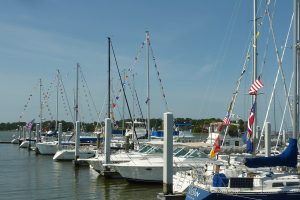
We also have a ‘big boat’ program with Spring and Fall Friday evening Races for the PHRF racers. We host the CBYRA-sanctioned New Willoughby Challenge in July of each year with a course set in the Hampton Roads with a picnic afterword.
FUTURE
The Club is set to embark upon a new capital improvement plan which will be a multi-million renovation and expansion of our current dining and social venues, upgraded the tennis facility and tripling the size of the dock house among other improvements. The Junior Sailing program has a goal of continued excellence in instruction and to expand the youth sailing instruction season into the Spring and Fall months. We will continue to expand the reach of our junior sailors beyond the Chesapeake Bay.
Kiteboard One-Design: The CR:X
By Airwaves writer Mac Dickson
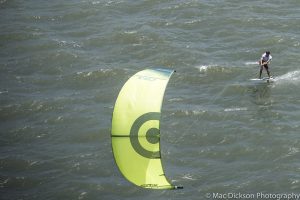
Since its inception, the CR:X has been present at numerous large-scale sailing and kiteboarding-specific events. The innovative package made its debut in the Sailing World Cup in 2016. The organizing authorities for SWC events in Melbourne, Australia and Miami invited Neil Pryde to showcase the CR:X as an exhibition for the kite racing class. Following that, CR:X has hosted and participated in many clinics and competitions at well-known venues and events. These include Key Biscayne Yacht Club, Eckerd College, the Charleston Fort2Battery, and most recently Buzzards Bay Regatta. The existing format for kite racing has been very openly structured, leading to a spending arms-race, and therefore inaccessible for many people. Neil Pryde has developed a class that makes entry into the sport much more feasible. College of Charleston sailor and entry-level kite racer RJ Porter had the opportunity to charter and race the CR:X in the 2017 Fort2Battery and Open Foil regatta. “It’s a really cool concept. I’m fairly new to kiting in general, so I wasn’t fully confident in my ability to race. I showed up, picked up my gear, and was able to make it around the course and finish races so that felt really rewarding,” said Porter.
Last weekend, the class made an appearance at a very well-regarded sailing event: the 45th annual Buzzards Bay Regatta in New Bedford, MA. BBR has maintained a stellar reputation within the premiere summer sailing circuit in New England throughout its 45 years. Forrest Williams, the event’s recently appointed regatta chair, exhibited focus on a modern, exciting, and relevant format for the 45th rendition of the event. As a result, a new element was introduced into the regatta this year: an officially recognized kite racing circle. Williams asked Neil Pryde to be an official regatta sponsor upon catching wind of their newly launched One Design kite class. Neil Pryde not only contributed charter gear for the CR:X division, but also a Principal Race Officer for the entire kiting circle: Brendan Healy. Brendan’s contributions to BBR were not limited to playing the role of PRO. The format for the event designated Friday as a very constructive clinic day. Orchestrated by Brendan, the goal of the day was to encourage and introduce newer kite racers to the sport as well as providing an outlet for more experienced riders to refine their skills and get dialed in for the following two days of racing. Saturday and Sunday couldn’t have been better; ideal conditions allowed eight races to be completed for the 18 competitors.
Already an accomplished sailor and kite racer in his own rite, Healy joined Neil Pryde in January 2017 and serves as One-Design Manager for North and South America. Brendan’s major goals for the one-of-a-kind CR:X class include integrating the sport of kiting with sailing; introducing kiteboarding into youth programs; and providing a training platform for US riders to rise to the top levels of kite racing competition.
The fact that CR:X is a One-Design system sets it apart from all other approaches. “If you look at any successful, long-term class it’s a One Design class. In terms of kite racing and windsurfing, in my mind, it’s really the only long-term viable solution,” said Healy. Kite racing is a growing sport. While the format is yet to be determined, it has been fairly well established that kiting is on its way to the Olympic level. Through a level-playing-field approach, financial accessibility, and ease-of-use, the CR:X opens doors for anyone who is interested to get into the sport of kite racing.
Check out our interview with Brendan here:
What are some of the things, besides being convertible from twin-tip to foil, that make the CR:X different than other kiteboarding options?
I think honestly, the underlying fact is that it’s One Design. As it is right now, it’s the only One Design kiteboarding class in the world. One thing we’d really like to do is bring kiteboarding into youth sailing and basically yacht club programs. Obviously, that works well in some geographic areas better than others. It’s easier to launch and ride in some places for obvious reasons. That’s really the one thing that the platform was designed for. Yacht clubs or any institutional program looks at a product, whether it’s a 420 or a Laser or a Kite, and says “ok… are the parts easy to get? Is it durable? Can I race it against other things that are exactly the same?” I think it kind of ticks all those boxes. From a learning platform, the board is rather large… it’s a 145cm board so it performs well in light air just because it has extra planing surface. It also caters very well to the first-time kiter because it is a little bigger, a little easier to get up on a plane, and get going sooner, you know? And then, everything packs down into one convenient little travel bag.
It’s honestly a pretty good value in terms of brand new equipment. We purposely priced this lower than most kites on the market because we operate One Design from B to C… straight business to consumer… we don’t use any dealer networks or anything. The whole idea is to keep it affordable for yacht clubs and for junior sailors.
I remember getting into it when I first started kiting ten years ago, and I had a Vanguard 15 and I sold my Vanguard for thirty-five hundred bucks and then… I bought all my kiting gear and spent an additional thousand bucks. This thing… if you get one kite… you can get it for $3100 bucks… a kite, a board, a foil, a bag, bar, pump… everything you need. I’m not only trying to sell Neil Pryde when I say this, I truly think the price point is pretty good.
You don’t operate through a network of dealers; do you have any partners?
We do, but it’s essentially all internal. We have a couple dealers in Europe and a few in Australia, but for the most part, in North and South America it’s straight business to consumer, straight from Neil Pryde. It cuts down on, this is definitely not the right word, but it cuts down on middleman charges. There’s no real markup. It’s us. We get the products from our suppliers and then we sell. Again, it’s just an effort to keep prices low.
What is attractive, in your opinion, about One Design Kiting?
I think it goes back to price point. If you were to get right into it [open foil racing] with full carbon everything, one foil kite brand new is about twenty-one to twenty-five hundred dollars. The foil board, brand new, is right around the same price. So together, with just one kite and one board, you’re looking at around five grand. The foil kites wear out pretty quickly. They’re like spinnakers; they’re made of the same material. They stretch and there’s no rigid structure in them at all, so they wear out pretty quickly. You have to replace them pretty often. If you’re racing foil kites, you need at least four kites. So, immediately, you’re looking at about ten to fifteen grand as just your entry point. With One Design, we can certainly keep the cost much lower. Like I said before, our package starts at about thirty-one 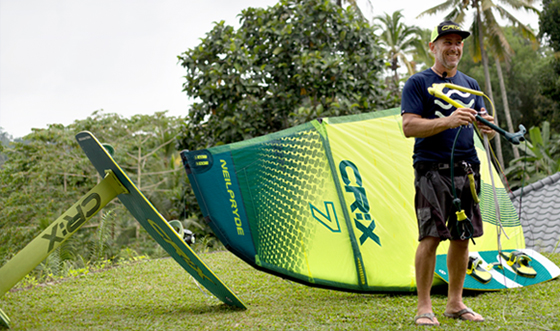
“It’s pretty fun man… it’s wild how close the racing is. We did an event down here, pretty informal, this weekend where there were about ten of us out racing and people would be calling room on each other at the leeward mark… going like twenty, twenty-two knots asking for room.”
The CR:X Class has had a number of events. Can you tell me about some of them?
I think the first place it really started was with the Sailing World Cup over this past winter. I believe that the SWC actually invited Neil Pryde and the CR:X to kind of tag along at a couple events. We were an exhibition event in Melbourne, Australia… and then we were an exhibition event here in Miami. That was kind of where it really started, and that was right around the launch of the CR:X, too. It technically launched in October of 2016. Since then, it’s really been a little bit of a grassroots operation. We hold as many clinics as we can, and we’re actually working with a couple yacht clubs here in Miami, like Key Biscayne Yacht Club and Coconut Grove Sailing Center for example. Key Biscayne actually has a Kite Program going on right now. They’re doing two weeks of it with all their members. They have two coaches and it seems to be going pretty well so far. They seem to be enjoying it. I think it’s just one of those things where it takes one or two clubs to really try it out to see how easy and feasible it really is. I think one of the big barriers-to-entry to kiting in a yacht club format is that people see kiting as something that’s dangerous. You get pulled up in the air… you know, whatever. In the past ten or fifteen years, it’s come such a long way that it’s no more dangerous than bringing a group of Lasers out. You can launch from a sandbar, you can launch from a beach… if you’re at a club where you don’t have a beach nearby, you can take a boat out and launch from your boat. We did one program with a lot of coaches from this area; we called it “Coach the Coaches.” We basically took the coaches out for two or three days of kiting. At the end of it, they were pretty overwhelmed with how easy and accessible it was. That sort of led into Coconut Grove Sailing Center and Key Biscayne coming back to us and saying, “we want to do it.”
I think it’s a one-by-one operation. I’ve put together a leasing package too, so if a club can’t really afford the gear straight-up, we can lease it to them. We really want to get this going. We want to work with yacht clubs. We see things like the Youth Olympic Games coming up next year and there really is no training platform within the United States for it. Whether you would use our gear in that event or not is totally up to the individual competitor, but certainly training on a One Design platform makes practice and then moving up much easier. You know exactly what the difference is… you’re not like “ah, man I gotta tune my kite just a little bit differently…” Developing form is just that much easier in a One Design platform.
I think we catch a lot of flak for our gear… CR:X in particular. People think it’s just a little too simple maybe? Or not high-performance enough? But, that’s not the point of it at all. The point of it is that it’s a progressive, feeder platform. We want to bring people into kiting in a way that’s more easy and accessible; we don’t want to scare anybody away. It’s a friendly package to do that.
Out of the events that you mentioned, in your opinion, what has been the most successful?
It’s hard to say so far. When we went to Charleston for the Fort2Battery; that was pretty successful I think. I think it just highlighted the fact that, in year one at least, we’re structuring it very similarly to a lot of One Design regattas. You go to a regatta, you don’t have a boat, you charter a boat. We did the same thing with our gear. You can literally just fly in with your harness and a wetsuit, charter the gear for an extra fifty… seventy-five bucks, and you have everything you need. Three kites, foil board, twin-tip board… anything you would need. So, I think that Fort2Battery really highlighted that concept.
You make a good point about F2B. I personally know some kids who tried the platform out in that event. They liked it so much that they subsequently went to St. Pete and chartered your gear to do that regatta.
Exactly. We did a demo down there and kind of just had our gear available for anyone that wanted to try it. We were a little late to the game, so we didn’t have a One Design division, but we just wanted to be there and be present for people to see the stuff.
What we have coming up on the schedule will be really effective, I think. It’ll start to generate some enthusiasm too. We partnered with Buzzards Bay Regatta, with me running the kite circle for that, including open foils, CR:X in foil mode, and twin-tip racing for Friday-Saturday-Sunday.
That brings me to another big goal of mine… As long as kite racing has been going on, there has been kite regattas and then sailing regattas; they’ve been completely separate. You never see them grouped together. I think one of the big things that I’m trying to do going forward is to work with several existing regattas. It’s the same thing as the yacht clubs, it doesn’t work in every location. For example, it definitely wouldn’t work in like, Long Island Sound… but in some places, it works quite well. I think BBR will be sweet because all the kiters will be right there with all the sailors in the same place at the end of the day you know, and everyone will be hanging out together, and then go to the tent party, and generate the feeling that kiting is part of sailing. So that’s a big goal of mine… to have that happen more often. I want to start working with a lot of larger events and start to group everything together. I just don’t see any reason for them to be completely separate.
If you want to grow the sport… sailors will see that at events and be like, “oh wow that’s sick I should be doing that.” If there was kiting at Charleston Race Week for example, I would one hundred percent do it. I think a lot of guys would. I think there are a bunch of events where that could work out.
What would you say some of your biggest goals are going forward?
I think my biggest thing… I would personally feel really psyched with my job if we got to the point where there were like ten to fifteen clubs in the country running kite racing programs within junior sailing. That would be totally awesome. I think we’re in a place now where a lot of clubs are losing young sailing members because they get burnt out on sailing. You see a lot of adventure sailing programs showing up. So, I think it’s a pretty good time for this stuff. That, personally, would make me feel pretty pumped up.
Something else we’re really trying to do is basically like a One Design Kiting tour within North and South America. I think that could be awesome too. I certainly don’t want to get to the point where people feel like… this is hard to explain… but I don’t want them to feel as if it’s “elite”. So, we want it to be very encouraging for people to come do it, but we also want our next evolution of gear to be very high-end and competitive at the same time.
How would you say that this format brings a new element to sailing as a whole? How does it grow the sport in tandem with kiteboarding?
I think that the whole One Design thing helps to really solidify, or legitimize kiteboarding in sailors’ eyes. And that goes back to kiteboarding events being separate from sailing events. I think sailors identify pretty well with the One Design platform and the One Design idea. So, going forward, this whole concept meshes well with what sailors perceive as sailing. I certainly don’t want kiteboarding to go on existing as a beach event where at the same time, it’s one of those things where you can go out by yourself and have a totally awesome time. Recreationally, it’s super fun… you don’t have to be out there racing and competing all the time. Just going out with your friends and riding around is unbelievably fun. Honestly, it’s multi-generational too. Parents can go out and ride with their kids. It’s a super fun element of sailing, and I think that sometimes people misconstrue it or don’t necessarily see it as part of sailing. They see it as something that’s totally separate.
You can just be riding around on your foil and having a good time… then you can just say, “Ok… now I’m gonna see how fast I can possibly go. Or, I’m gonna go out and practice a bunch of tacks today… or a bunch of gybes.” Or, you can just ride around, and it’s still super fun. I think there are so many ways you can go with it that are all so fun.
It’s a really cool community within itself too, wouldn’t you say?
Exactly, yeah. You’ll only be pissed at yourself that you didn’t [get into kiteboarding] sooner, man. It’s awesome, dude. Because the gear is so and transportable… you know, anywhere you go, you’re like, “well, I may as well bring my kite with me.” Just pump at the beach, and you’re good to go. Also, kiters are all just super friendly. It’s not like surfing where it’s all territorial. Kiters just want to have fun, get to know kiters, and help each other… then, when the session’s done, go get a bunch of beers (or appropriately-aged soft drinks).
Get yours today at:
http://adventuresportsusa.com/kitesurf/crx.html
2017 Optimist National Team Race Championship Results

Over three days of racing the LYC-1 team, I believe, never lost a race. Wow. The team consisted of:
- Stephan Baker
- Connor Boland
- Mitchell Callahan
- Justin Callahan
- Sara Schumann
Full results HERE
Notice of Clinic: Sail1Design Optimist Fall Elite Training Clinic
Sail1Design Performance Coaching
New for 2017: Sail1Design Optimist Elite Fall Training CAMP
Sail1Design is hosting several Optimist dinghy training sessions for fall, 2017. Sailing will take place on the Magothy River, just north of Annapolis, MD., and will be strictly limited to 15 sailors. Our venue is a perfect place to sail; very short sail out and in, no boat traffic, and good fall winds.
These sessions are for RWB sailors with regional/national-level Optimist sailing experience. Applications are by resume and open until filled; coaches will choose based on application strength. We are excited this fall to blend both experienced adult professional coaching with peer coaches out on the water, who will be able to display boat handling techniques that made them so successful in the Optimist sailing world.
Training will focus on:
- Boat setup/preparation
- big fleet start simulation / big fleet management and tactics
- boat speed drills upwind & downwind
- boat handling
- basic team racing concepts (time allowing)
Sailors will train on the water and de-brief off the water with video. Coaches include experienced adults along with recent top-level graduates of the Optimist class. By providing both adult and peer coaching, we feel this clinic will provide unique and very beneficial insights for aspiring Optimist sailors.
For more information, please contact Sail1Design: [email protected] or 443-220-2089
REGISTRATION & APPLICATION
https://goo.gl/forms/JqqAuLolBQ7Hw4oW2
SCHEDULE
This is a 3 day training session OCTOBER 13,14 & 15
- Friday 1530-1800
- Saturday 0900-1500
- Sunday 0900-1500
FEES
Per day:
- $75 for Fri
- $150 for Saturday
- $150 for Sunday
- All days: $350 for all three days
HOTELS/MOTELS NEARBY
- Comfort Inn, close by and on a budget
- Crowne Plaza Annapolis
- Holiday Inn Express
- DoubleTree Hilton
Coaches
Tom Sitzmann
A lifelong educator and former pro sailor, Tom has coached sailing and directed sailing programs from Maine to Annapolis, and after working with both Tufts and Dartmouth sailing teams, was an assistant offshore & dinghy coach at the USNA, head intercollegiate coach at Bowdoin College, and is now head coach at Severn School, where he founded their modern program with its own private venue, and guided the team to a National championship, the first and only Chesapeake Bay school ever to win the Mallory Trophy. The team narrowly lost out this spring on its second, finishing 2nd at MIT in a close regatta.
Apprentice coaches:
- Sam Bruce (Former Optimist World team race champion)
- Jordan Bruce ( Former Optimist National Team Member)
- Maddie Hawkins (Former Optimist World/National Team member, current Ida Lewis / 420 North American Champion)
Profiles in Pro Sailing: Greg Fisher
By Airwaves writer Taylor Penwell

Early Life
When did you start sailing?
Both my brother Matt and I started pretty young- we were like 5 or 6 when we started crewing for our Dad in his Lightning.
What drew you to competitive sailing?
We were very fortunate to have a super supportive family when it came to sailing. My Dad actually gave up his own sailing so he could really help us focus on ours. We had our own Lightnings at 11 and 12 (yes it raised a few eyebrows!) and our Dad took us to a bunch of regattas- both Junior events and Lightning- all through the summers.
He never really pushed us hard but gave us every opportunity to sail as much as we wanted so we could really enjoy the sport- which we did. Our club in central Ohio- Buckeye Lake- was very competitive and enthusiastic in those days. There was a strong one design racing focus as well as great passion for youth sailing/racing. Members of our club, and of course our parents, would all go to the major Junior regattas to cheer us on. We were super lucky.
Tell us about your college career. What did you take away from it?
College Sailing is when I really grew attached to the sport and realized it was more to me than just a hobby. I learned a great deal in college about the value of boat speed and sailing conservatively. I also appreciated the value of practice and coaching. Most important, I made friends- true quality people- who I still enjoy sailing and hanging out with today!
Sail Maker
How did you get into the sail making industry?
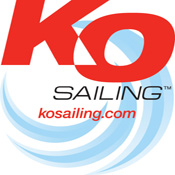
You started your own sail loft, Fisher Sails. What was it like to have your own sail loft?
I moved back to Ohio and opened one of Bill Shore’s first franchises in 1978. In 1986 I was ready to give it a go on my own and dropped the franchise and started Fisher Sails. We focused on just one design sails and really worked that niche. It was quite a learning experience that involved the running of a small business as well as designing and building sails. At one point we had upwards of 15 people working on the floor. We enjoyed a good run in those days and one year our sails even help win 14 different One Design Nationals! What a thrill!
In 1991 you joined the North Sails team and were there until the year you became the CofC Sailing Director, what was it like to work for one of the biggest sail making companies in the world?
Working for North Sails was, an incredible experience for me. When North Sails bought Fisher Sails in 1991 they were just beginning to roll out the first 3DL sails. It was exciting to watch the passion for the technology and desire to build the coolest, fastest sails. It would have been easy to become totally engrossed with just building the finest product but there was always a strong group in the company who appreciated and made sure that customers were always well cared for too. I was given a lot of free reign and encouraged to sell one design sails as I thought most effective. I really loved helping our customers take the sails, learn them, sail fast, and have a great time. We had so many great people and resources in our One Design Group that all complemented one another. There were incredibly talented designers, wise business people, strong marketers and all good sailors who loved the sport. Most of those guys in the One Design team are still there!
What did your job at North Sails entail?
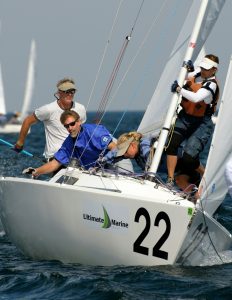
College of Charleston Director of Sailing
How did you find yourself as the College of Charleston Director of Sailing?
I really wasn’t looking for a career change. But one day out of the blue, Jim Allsopp a vice president at North said “hey, I know a position I bet you’d really like and you should check out”. Jim’s son Cole was on the team at the College of Charleston and Jim said the college was looking for a new director. Once I got over the fact that a vice president at North suggested I consider another career I surely checked it out! My daughter Martha had attended and enjoyed the College as well and of course the success and reputation that the College of Charleston Sailing Program had long achieved was impressive to say the least. Jim was right. Once we visited Charleston we felt the 
It was a real honor to be offered the Director of Sailing at C of C. We moved to Charleston in October 2010
The job is different from being a sail maker, what are some of the challenges you’ve found in this position?
Being the Director of Sailing at C of C was quite different from being a sailmaker. The administrative details are an important part of my daily duties and shouldn’t have been a surprise. Fundraising is a critical focus for any sailing program and I am fortunate for the support of our Development Office here at the College. The team feel was like that at North and I learned to really enjoy that part of my job. Though I still love to teach sailing and coach we have 3 excellent full time coaches and my real focus is to ensure they have all they need to be as effective as possible. They work hard and are great leaders. But I still love to make it to practice and watch the team sail. I still offer some ideas on boat speed when I can!
What is your involvement in recruiting sailors to come to CofC?
Our coaches Ward Cromwell, Mitch Hall and Ned Goss do a great job maintaining a watchful eye on the talent in high schools around the country. And when these kids come visit the college we all work to ensure they see all we’re proud of and offer. Usually the recruit rides in the coach boat with Ward or Mitch and sometimes stay with a team member so they really get an idea of what a “day in the life” is like. While we all work together in recruiting, it seems my greatest value is to be able to relate with the parents. Many I’ve met or even sailed against over the years.
What are some of your favorite highlights since you’ve been the Sailing Director?
We’ve been very fortunate and have enjoyed a lot of great times these past 6 1/2 years.
Winning 3 Fowle Trophies, 9 different Nationals and watching several of our sailors compete in Rio has been a thrill. We have had over 25 All-Americans. It’s been rewarding for our program to have such a successful offshore team. To be able to develop our Community Adaptive Program and help offer opportunities for Veterans and others who might not be able to sail has been super special. We host a few of our local high school teams’ practices at our center and it’s exciting to watch them enjoy and improve. All of us- our coaches, our staff and even our teams really want to contribute to the growth of sailing in Charleston.
What is your greatest satisfaction from being the Sailing Director?
Without question, the greatest reward for me is when our sailors actually grow to enjoy the sport even more than when they started at the College of Charleston. It’s great to see them improve, sail faster and of course win. But if they enjoy the whole process, the sport and want to continue on with it once they graduate-now that is really special and I feel like we’ve really contributed to their future!
The College of Charleston hosted the 2017 College Nationals, tell us about that experience hosting the event.
Well, that was a bit of a project. We took it on last September when the original host couldn’t hold it. We thought 8 months would be plenty of time to prepare but we needed every day to get it set up! But we had a great deal of support (especially from the USS Yorktown staff who provided spectating from the flight deck of the WWII aircraft carrier) and as a result it came off well. The sailing conditions were generally really good and provided the teams a little bit of everything…and for sure a good bit of current! But with over 330 sailors and 850 spectators and 11 days of sailing-it was indeed a big event. I was especially proud of our team and how hard they worked to ensure all the details were handled on land as well as the water and it was successful. But for sure for our sailors to sail so well and finally win 2 of the three Nationals and ultimately the Fowle was a thrill for all of us!
What do you have to say about your CofC team who won the Team Race and the Co-Ed National titles?
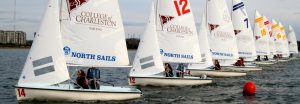
What makes a college program become top level?
In my humble opinion it is all about the passion at all levels. There needs to be support from the college itself. There must be fine boats, equipment and the facility that allow the team to progress. The coaches need to be hungry to help guide their sailors. And while I think the desire in the coaches can help fire up the team, the sailors themselves are who really the most passionate about their sailing, their schoolwork, their health and being able to navigate it all. They must enjoy the process of training, travelling and competition. I think building an environment that encourages your sailors enjoy all that goes with being a member of a top-level team is what makes the difference.
How do great sailors set themselves above the competition?
I think great college sailors work hard to avoid distraction in their day to day life. They know what is most important- or most important to them- and they work really hard to keep their eye on the ball. They also pace themselves and make sure they’re not burning themselves out- and recognize when their passion is being tested.
They are fast sailors and know how to keep their boat in the right gear most of the time. They’re conservative sailors and don’t try to win a regatta in one race or the first race…again they recognize the pace and usually it takes a bunch of races to come out on top in an event. They’re excellent, consistent starters. But they’ll rarely be leading half way up the first beat…. but they’ll rarely be deep as well. They’re avid learners and always enthused to master new skills…and look for help to make it happen. It’s also rare to see a true champion who’s not a great sportsman or sportswoman as well. Like with their life skills, they work hard to keep it all in perspective.
When you are not sailing or running the colleges sailing, what do you enjoy doing?
My wife and I enjoy following our 12-year-old daughter around in her gymnastics competitions. Of course, we’re hoping she’ll one day get pumped abut sailing and racing like us. We’re working hard, but cautiously to give her the opportunities so she’ll hopefully fall for it. She has an Optimist, an Open Bic and has sailed with us in a few Lightning regattas (we still enjoy our own racing from time to time) …but so far, no luck…but stay tuned!
But we also enjoy just cruising around Charleston in our little powerboat and checking out all the different little bays, rivers, intercostal waterways. What a cool place!
Team USA Wins Optimist World Team Racing Championship…. Again!
Press Report: July 17, 2017
USA Retains Grasp on Team Racing World Title for Second Year
Story courtesy of Optiworld
Pattaya, Thailand – Team USA beat Team China in a dramatic, hard-won, winner-takes-all ‘Sail Off’ in the team racing portion of the Optimist World Championship 2017, retaining its hold on the IODA Challenge Cup team racing trophy for the second year in a row.
“It was going to be challenging. All the teams are excellent. We knew that going into the day,” said Justin Callahan, Team USA’s sailor spokesman and the only remaining member of last year’s winning team.
The day opened with a series of flights which ensured each of the top 16 teams had a chance to race twice before being eliminated if they lost twice. Team USA skillfully bested Ireland, Germany, Thailand, and Singapore in turn to earn the first assured place in the final Sail Off.
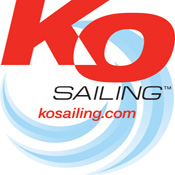
In contrast, the Chinese had to duel with six teams to secure their spot in the finals. Ironically, in their second race, they were beaten by the Malaysians, but, in the showdown for the second seat in the Sail Off, they found themselves up against Team Malaysia again, this time besting them and sending them to shore with bronze.
The final Sail Off was a best-of-three race series, the first race won by Team USA, the second by Team China. This made the third race a ‘must win’. As the race committee, described it, the deciding race was a “great race”, the winner unclear until the very end.
 As Justin described it, “We were first, second and third at Mark 3 in the final race, but then things got a little messy”. After an incident with a Chinese sailor who pushed the limits of what is allowed in team racing, Justin found himself in sixth position. He managed to gain ground, and, as he put it “somehow, right at the finish, we pinned them back and finished first, second and third. It was a very close finish.”
As Justin described it, “We were first, second and third at Mark 3 in the final race, but then things got a little messy”. After an incident with a Chinese sailor who pushed the limits of what is allowed in team racing, Justin found himself in sixth position. He managed to gain ground, and, as he put it “somehow, right at the finish, we pinned them back and finished first, second and third. It was a very close finish.”On the water observers described a lot of shouting by sailors and whistle blowing by umpires as rules were broken and sailors called each other out, all part of the drama of team racing, in which competitors may push or hold their opponents back in what might otherwise be considered unsportsmanlike behavior.
Team USA had no complaints about the high intensity of the action on the water, however. As Justin said, “The umpiring was amazing. They were calling all the right calls. We got flags when we knew should have got flags.”
Asked what the team’s secret to success was, he did not hesitate. “Chemistry. Synergy on the team,” he said.
“Training. Training in team racing,” answered the team’s coach, Lior Lavie, who credited silver medalists Team China as excellent in the event.
“Their devotion to excellence in sailing,” added Paul Callahan, country representative, president of the US Optimist Dinghy Association, a two time Paralympian, and, most importantly today, proud father to Justin and his twin brother Mitchell, who both qualified for Team USA on their own merits.
Other members of the team – Stephan Baker, Liam O’Keefe, and Charlotte Leigh – were beaming ear to ear at the end of the day as well.

The team’s only issue now is how to get the large IODA Challenge Cup back to the USA, the box they carried it over in damaged. We trust event organizers will be able to find a replacement.
On Tuesday, the individual world championships series continues with fleets split into four based on their rankings after six earlier this week. The Americans can expect to do battle with the Chinese again in the coming days. Four members of Team USA and three of Team China are in the gold fleet.
The 2017 Optimist World Championship, which has a record-breaking 281 sailors from 62 countries participating, is organized by the Royal Varuna Yacht Club with the endorsement of the Yacht Racing Association of Thailand and the Junior Sailing Squadron of Thailand under the International Optimist Dinghy Association. It is supported by strategic partners including Pattaya City, the Sports Authority of Thailand and the Thailand Convention and Exhibition Bureau. Co-sponsors include The Pizza Company, Apollo (Thailand), Thai Airways, and True Corporation.
Revitalizing a Class: The US-UK Youth Etchells Challenge
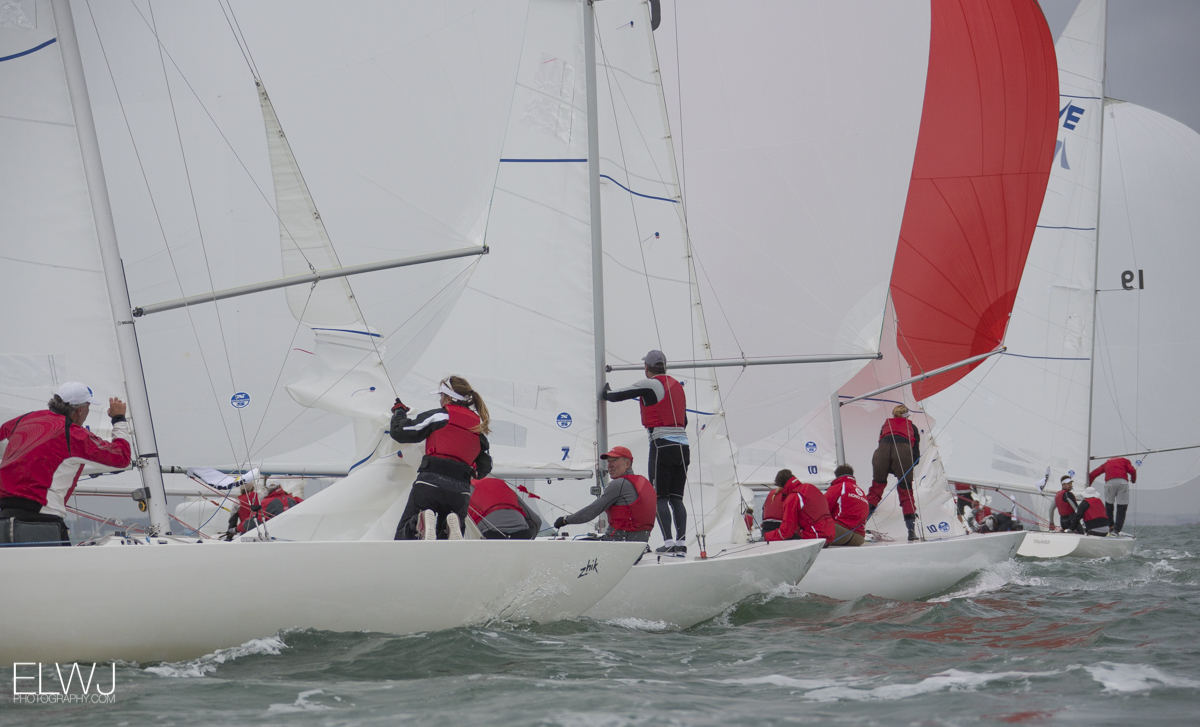
The Class
The Etchells class has maintained a celebrated and decorated reputation since Skip Etchells designed his first twenty-two-foot racing sloop in 1965. Born in 1911, Skip lived through both World Wars and the Great Depression. He spent a much of his life designing Stars and later Lightning’s in New England. The Etchells family has a noteworthy sailing pedigree. Skip won the Star Class World Championship as a helmsman in 1951. His wife and crew, Mary, remains the only female world champion in the Star class to date. Skip’s extensive racing experience and success made him the ideal boat builder. Following his move to Stamford in 1965, Skip designed a new boat that would become the International Etchells Class.
The design, according to skip, was “a very simple rule, very good for the imagination: 22 feet on the waterline, 4’6” draft, 3,700 pounds displacement, and only 310 square feet of actual sail area. A wholesome, heavy-weather boat was clearly invited, we thought (Etchells.org).”
Today, the Etchells is a thirty-foot sloop that has maintained over fifty active fleets for the past thirty years. The vessel is crewed by three to four people, and remains comfortable and competitive. It boasts a low wetted surface hull which allows it to sail in even the lightest of breeze. The Etchells class has adhered to a one-design principle. The construction of the boats is not only governed by the strong, effective class association but also the ISAF.
The class boasts high levels of competition in all levels of racing. The top Etchells sailors often have ten or more years in the class, and an even deeper history in other boats. However, in recent history there has been a noticeable lack of younger-generation racers in the class. The first-annual US-UK Youth Etchells Challenge came about this year in an effort to change that.
The Challenge
The challenge was issued by the Cowes, UK Etchells fleet over the winter after discussions at the 2016 World Championship and the annual Etchells series in Miami, according to Senet Bischoff. It included invitations to one, or two US Youth teams to compete in the an annual Etchells invitational regatta taking place in Cowes, UK: the Gertrude Cup. The event will see very high competition from twenty teams, including the UK Youth entry.
The US Etchells fleet was quick to jump at this opportunity and promptly made an announcement in search of the right sailors in early April. Although they were only challenged to send one boat, they received so much interest from youth sailors and Etchells class members that the final group for the Gertrude Cup will be two boats and a team manager. The team was selected through applications due on the first of May to sailors not older than twenty-five. The application required a statement of how participation in the challenge would foster the applicant’s development as a competitive sailor. The selection committee consisted of three well-known names in the Etchells world: Senet Bischoff, Michael Gavin, and 2017 national champion Steve Benjamin. “We were seeking sailors that had interest in learning and broadening their sailing experience… and a team that had a balance of dinghy and keelboat experience, as well as experience at different positions in the boat,” says Bischoff. The committee has since selflessly dedicated much of their own time and resources to this team through providing boats, fundraising, coaching, support, and much more.
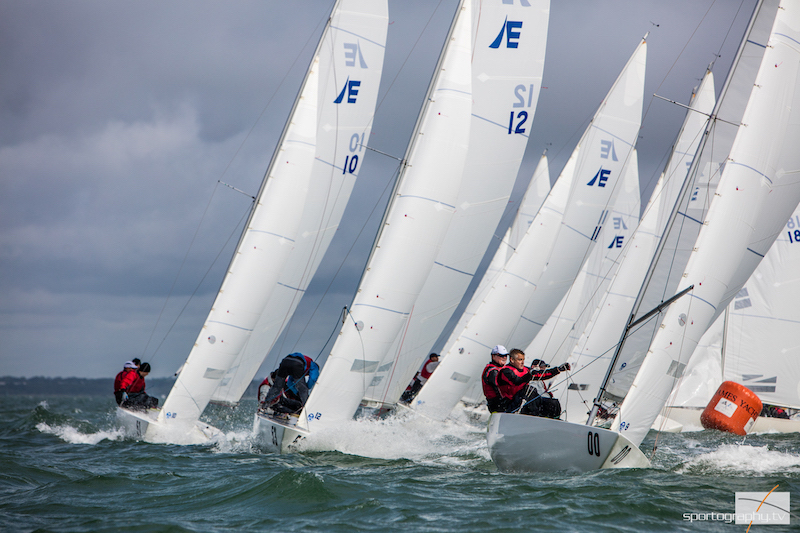
The Team
The basic criteria for applications to the team, as outlined in the announcement, included: “a sailing résumé, contact information, availability from May to July, birthday, height, weight, and a statement of how participation in the Youth Challenge will contribute to your development as a competitive sailor.” After sorting through numerous applications, the committee decided on a final team of nine sailors within the age requirement of 18-24. The sailors that constitute the selected team range from the minimum to maximum ages and boast an impressive array of sailing experience. Through the committee, the team has access to two competitive boats to train in. Their agenda for the summer consists of practice weekends and four major US Etchells events leading up to the coveted Gertrude Cup. The majority of the team, sans the two skippers, has no prior experience in the class.
The members of the team are very excited about the three-month campaign. Captain and Skipper Connor Needham stated that, “the opportunity that presented itself to have a scheduled, outline for the summer; competing in multiple events in a class that’s very well known for its high level of competitiveness; getting to a point of being able to compete in a major event like the Gertrude Cup at the end of July,” is what especially drew him to the challenge.
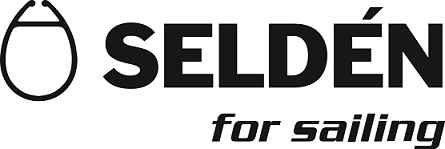
They are coming into this challenge fully aware of the steep learning curve of the technical, competitive Etchells class. Despite their lack of experience in this particular boat, they are all valuable assets in their own unique respect. What is it about these kids, mostly brand new to the boat, that gives them a shot? Ed Lebens, a Long Island Sound Native, believes that “the range of skill sets, skill levels and sailing experience all coming together in one class and one team,” will be able to push them to be successful and competitive in the class. The thing that really makes this program special is their passion for learning from each other. “Everybody has come to this team with a common goal of learning a lot and trying to get to the top. Nobody’s stuck up with ego, and everybody’s learning from each other and making the most of the team,” asserts mid-bowman Key Becker. The team had their debut in full force this past weekend as they competed in the Atlantic Coast Championship at Shelter Island Yacht Club, Needham’s home Club. They were coming off of two practice weekends at the venue, eager to race and continue to grow their skills. The team raced two boats skippered by Connor Needham and Marly Isler and earned 5th and 9th place finishes, respectively. These results are very impressive for the tough fleet of 24 boats that competed. Check out each sailor’s individual profiles below:
Key Becker
- Age: 19
- Home Yacht Club Affiliation: American Yacht Club
- Education: College of Charleston
- Etchells Class Experience: Minimal
- Sailing Background: Mixed offshore and inshore big boat sailing generally on more high-performance boats.
- Team Role: Mid bow
Brooks Daley
- Age: 18
- Home Yacht Club Affiliation: Noroton Yacht Club
- Education: Darien High School, graduate
- Etchells Class Experience: None before challenge
- Sailing Background: Lots of local dinghy sailing as well as a ton of big boat experience
- Team Role: Bow
Marly Isler
- Age: 23
- Home Yacht Club Affiliation: San Diego Yacht Club / Yale Corinthian Yacht Club
- Education: Yale University
- Etchells Class Experience: Extensive, Fleet 13
- Sailing Background: I raced 420’s, skiffs, and Etchells’ internationally before becoming a member of the Yale University Sailing team where I sailed on the match race and women’s circuit. I was captain my senior year and majored in American Studies with a focus in Architecture and Environmental Studies. I’m now working at Latham & Watkins law firm in Washington, D.C. and use practically all of my vacation days to continue to sail; competing in team races, long distance races, and short-course regattas.
- Team Role: Skipper
Gordon Gurnell
- Age: 18
- Home Yacht Club Affiliation: Essex Yacht Club
- Education: St. George’s School
- Etchells Class Experience: None before the challenge
- Sailing background: Started in Opti’s. Progressed to C420’s and have sailed the circuit 3 times. I race big boats on distance races like the Ida Lewis Distance Race and the Vineyard Race. I also sail in the American Yacht Club spring and fall series’ and Block Island Race Week. I race big boats – mostly on Swan 42’s and Swan 45’s. I campaigned last year for 2016 Melges 24 Worlds. I competed in the Red Bull Foiling Generation, which is on the more high-performance side of the sailing I have done. During the winters, I frostbite in Laser’s on the Connecticut River. I sail for St. George’s school which makes for a very intense season.
- Team Role: Main and spinnaker trimmer. I go back and forth from the 2nd role and the 3rd role in the boat.
Hannah Polster
- Age: 21
- Home Yacht Club Affiliation: Severn Sailing Association
- Education: Graduated from Boston University with a degree in Mechanical Engineering
- Etchells Class Experience: none
- Sailing Background: I grew up in Annapolis, MD sailing at SSA (Severn Sailing Association) racing Opti’s and 420s. The past 4 years I attended Boston University majoring in mechanical engineering and was a member of the sailing team. I sailed both the women’s and coed circuits, sailing A division for women’s and B division for co-ed. As a junior, I was captain of the women’s team and then captain of the co-ed team senior year. I received the honor of Women’s All-American Honorable Mention in 2016 and Women’s All-American in 2017.
- Team Role: mid-bow on Connor’s boat, mostly calling tactics. I am also the team treasurer.
Connor Needham
- Age: 25
- Home Yacht Club Affiliation: Shelter Island Yacht Club
- Education: Roger Williams University ’14, BS Mechanical Engineering
- Etchells Class Experience: Competing for 4 years
- Sailing Background: Since high school I have competed in regattas in various positions in boats such as: Lasers, 420’s, various Collegiate Dinghies, Melges 20’s, Etchells’, Swan 42’s, Farr 30’s, X40’s, Summit 40’s, J70’s, J109’s, J111’s. I graduated from RWU in 2014 and continued my contribution and activeness in the sailing community through coaching in college and competing in the off season. I started out as the head coach at Middlebury and was shortly after hired to coach at Boston University. I have competed in various Etchells regattas since 2014 as a skipper which includes the Louis Piana Cup, Sidney Doren Memorial Regatta, Biscayne Bay Series, Etchells Midwinters, Etchells LIS Championship, the NYYC Annual Regatta and a Summer Series which I most recently won with a fleet of 14 boats including well known skippers such as: Jay Mills, Scott Kaufman and Jay Cross. I was elected to race in the NYYC Invitational Cup in 2014 and 2016 where our team was 1 position short of qualifying in 2014. This summer I will also be competing in the Swan 42 Worlds.
- Team Role: Skipper, Captain
Ed Lebens
- Age: 20
- Home Yacht Club Affiliation: Seawanhaka Yacht Club
- Education: Currently a junior at RWU, majoring in Finance.
- Etchells Class Experience: Practice crew for Steve Benjamin, no racing experience
- Sailing Background: Born and raised sailing on Long Island Sound, initially sailing Optimist’s, Club 420’s, and Laser’s before moving onto Collegiate Sailing as well as bigger and faster boats such as Farr 40’s, J105’s, J70’s, and Etchell’s. Represents Roger Williams in collegiate sailing.
- Team Role: Main trimmer
Bram Bakman
- Age: 18
- Home Yacht Club Affiliation: Noroton Yacht Club
- Education: Rising freshman Tufts University ’21
- Etchells Class Experience: None prior to challenge
- Sailing Background: I420 circuit
- Team Role: Bowman
James (Jimmy) Kennedy
- Age: 22
- Home Yacht Club Affiliation: Beachwood Yacht Club
- Education: Roger Williams University ’17, Marketing major
- Etchells Class Experience: First event in the boat: 17th at 2017 Nationals
- Sailing Background: I grew up sailing from a young age. At about 7, my parents put me in a junior program at the Beachwood Yacht Club located on the Toms River. While there I competed in Opti’s, Sunfish, Laser’s and Club 420’s. Moving into high school, I competed for as a crew and skipper at Toms River High School South from 2009 – 2013. In the summers, I competed in the BBYRA; sailing E Scows, Laser’s, and A Cats. Moving forward, I attended Roger Williams University very eager to sail. While there, I sailed as skipper and crew in FJ’s, 420’s, Zim 15’s, Navy 44’s, J70’s, and several other dinghies. As a recent graduate of Roger Williams University, I am sailing as much as possible competing on E Scows, Etchells’, J70’s and in several Team Racing events.
- Team Role: Main and Spinnaker trimmer
The Mission
The US-UK Etchells Youth Challenge has a clear goal: growth of the sport through expanding the horizons of youth sailors. There is a huge gap between sailors who grew up immersed in the community with opportunities falling in their lap from every direction and those who have to make their own way. The latter is much more difficult. Sailors who grow up outside of the high-level bubble are not often seen competing at big, competitive events outside of the dinghy world like the Melges 24 Nationals, J70 North Americans, Annapolis to Newport, etc. This program making a clear, decisive effort to change that. “Being somebody that’s graduated from college,” comments Hannah Polster (Boston U. ’17), “and not being super involved in sailing outside of the realm of dinghy sailing and college sailing, it’s a huge opportunity for people to get into new classes of boats and kind of get further involved in sailing outside of the academic world; something that, coming into my senior year, I didn’t really know how to deal with post-college. It definitely gives me a lot of opportunities, and as it continues I think it will be a huge help for other people when they graduate.”
Many college sailors are under the impression that the “big-time” sailing route they are limited to after finishing school, or if they take time off of school, is an Olympic campaign. This challenge is a new way for sailors to represent their country, compete internationally, and gain skills from prime competition without the financial or time requirements of an Olympic run. “It’s really cool for the people who don’t want to put in the [semester] that it takes to get an Olympic medal. It’s a class, where you can have a life and work your butt off and still compete in the top events, and still stay involved in the sailing community,” states Skipper Marly Isler.
This initiative can largely be credited to the committee that made it happen. “I think we all owe something to Steve, Senet, and Michael for putting this together,” notes Becker, “They’ve all supported each one of us individually. Those three are a huge part of this and they don’t get mentioned enough.” Steve Benjamin, the driving force behind it all, recently won the 2017 Etchells National Championship. He is focused on his own campaign and is in definite contention for the World Championship, yet he is spending a large amount of his own time and resources to bring youth sailors into the sport and class that he loves. “That’s a really cool thing he’s doing, and a very selfless thing,” Isler fondly remarks.
It takes people like Steve Benjamin, organizations like the Etchells class, alliances like that of the US and the UK, and driven competitors like this team to take the sport we all cherish so deeply to the next level. The Sail1Design team is looking forward to following what these kids accomplish and keeping our readers updated. Stay tuned, and go USA!
2017 Block Island Race Week Results & Report
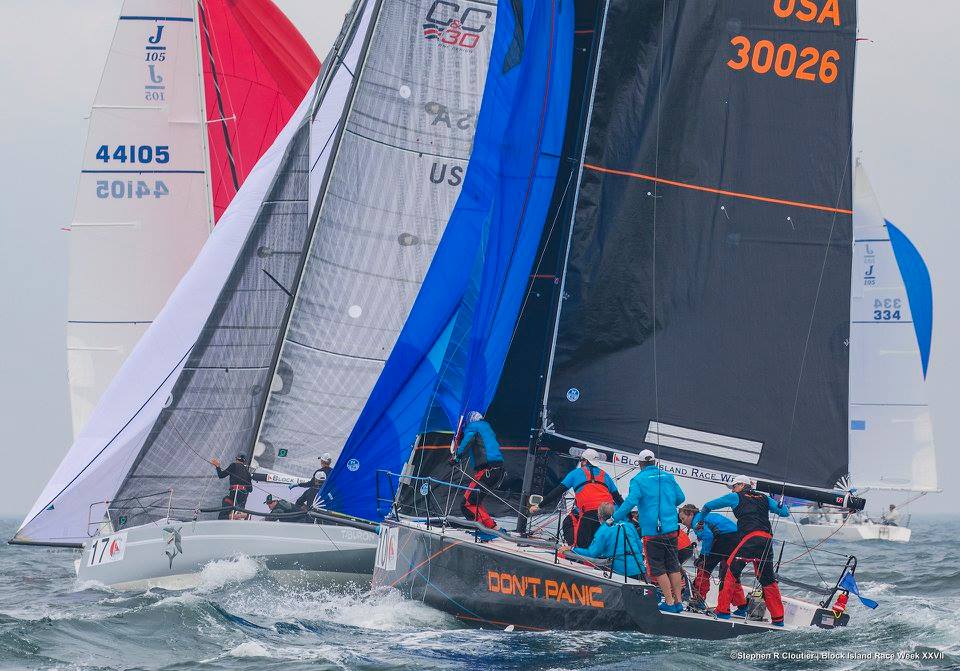
Block Island Race Week / Storm Trysail Club / Block Island, RI / June 18-23, 2017
This regatta served as the:
- IRC North American Championship, Three Divisions
- J44 North American Championship
- C&C 30 North American Championship
- J109 North American Championship
- J88 East Coast Championship
- J105 East Coast Championship
- PHRF East Coast Championship, Four Divisions
- P0erformance Cruising and Multihull Divisions
Block Island Race Week started off slow due to fog and low visibility that postponed competition for all of Monday and most of Tuesday. The race committee was able to sneak in the first race on Tuesday afternoon and the second and third races on Wednesday.
In the IRC 2 division, Ker 50 ‘Temptation’ earned some of the most consistent scores in the fleet. “We were lucky to have conditions that favored Temptation.” noted Skipper Art Santry, as he reflected on the success of races 1 and 2. “This boat is hard to stop in 20 knots of breeze. Add in great crew work from 15 good guys and it really makes a difference.” The crew of Temptation included students from Oakcliff Sailing Center, a non-profit sailing development program in Oyster Bay, New York.
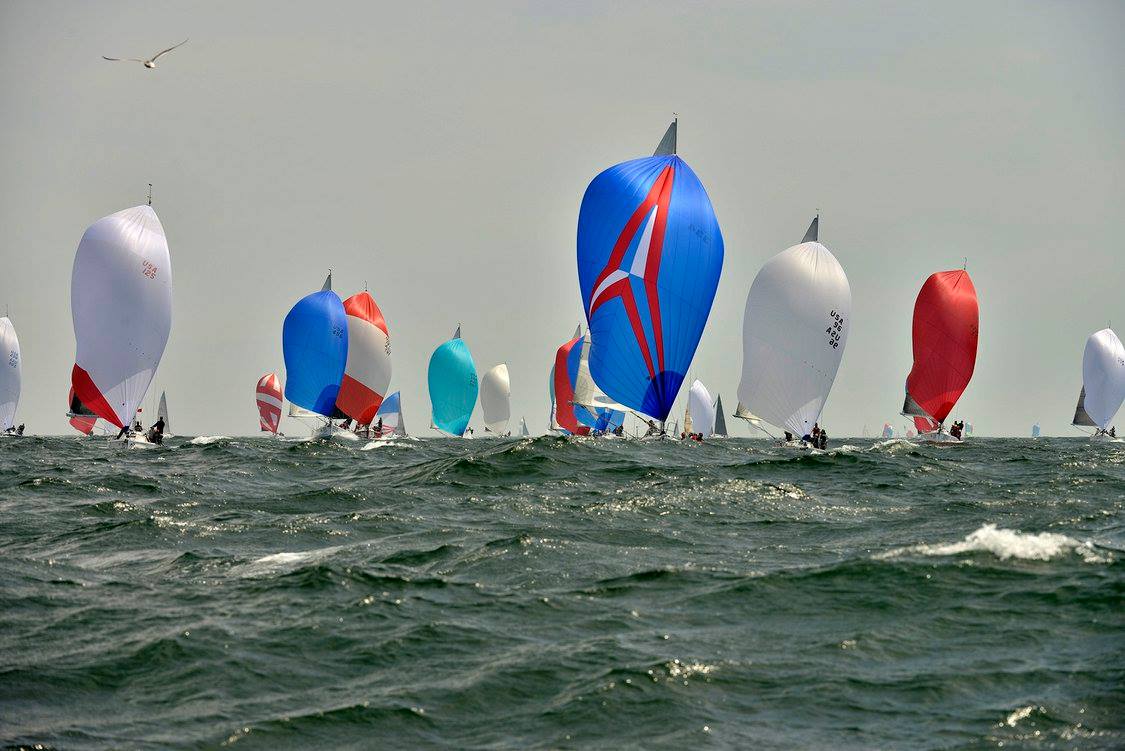
Navigator Suzy Leech stressed the importance of layline calls in the distance race. “The keys to navigating the around Block Island course were all about laylines, which were to set marks – not Government marks. I was nervous that a few calls would be off because of the fog” As the fleet bore off around the north end of the island, thick fog made it tricky for sailors to locate marks of the course and the finish line. (Leech) “Thankfully the Gods were smiling on us and took us around nicely!”
Block Island Race Week is a biennial event hosted by Storm Trysail Club. Below are the results for the one design fleets:
- Kenai, J44 North American Champion
- Xtreme2, C&C 30 North American Champion
- Loki, J109 North American Champion
- Jazz, J88 East Coast Champion
- Good Trade, J105 East Coast Champion
For full results: https://www.yachtscoring.com/event_results_cumulative.cfm?eID=2954
results: https://yachtscoring.com/event_results_cumulative.cfm?eID=2954
Photos (2) courtesy of Block Island Race Week Facebook page @blockislandraceweek
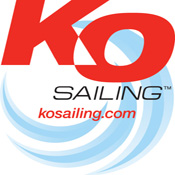
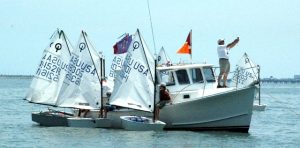

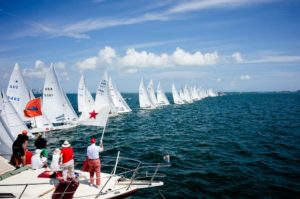

 Be Positive & Creative. Add testimonials, photos, videos, that show off your institutions unique strengths. Visuals and positive testaments about your organization speak volumes to candidates!
Be Positive & Creative. Add testimonials, photos, videos, that show off your institutions unique strengths. Visuals and positive testaments about your organization speak volumes to candidates! 